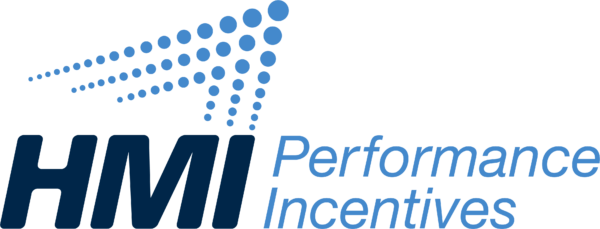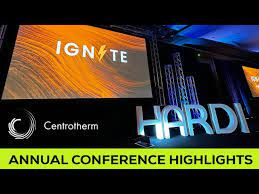Last month HARDI held its Annual Conference and, like most, it attracted many manufacturers, distributors and independent representatives from the industry. All had similar questions … “how has your business been?” and, more importantly, “what are you seeing for 2023?” Everyone is seeking a benchmark.
At the same time, lots of one-on-one meetings between distributors and manufacturers.
 One of those in attendance was Lincoln Smith, Chief Strategy Officer for HMI Performance Incentives. HMI has been a HARDI member for the past 6 years and has attended a number of HARDI conferences. We asked him to share his observations and takeaways from this year’s conference:
One of those in attendance was Lincoln Smith, Chief Strategy Officer for HMI Performance Incentives. HMI has been a HARDI member for the past 6 years and has attended a number of HARDI conferences. We asked him to share his observations and takeaways from this year’s conference:
HARDI Ignite … Generating Insights
“What do HVACR, gut feelings, government regulations, and professional baseball all have in common? If, like me, you attended HARDI’s annual Ignite conference this past December, you were able to find out.
The 4-day conference, held in Houston, Texas at the Marriott Marquis hotel, brought together manufacturers and distributors from across HVACR industries. While it’s typically well-attended, this year’s event was an outlier, with more than 1800 attendees—nearly 20% more than were expected—and standing-room-only availability at most major sessions.
Overall, the conference covered a wide range of topics, including changes to energy efficiency standards, the importance of niches, how our intuition can actually be a useful data point, and of course, the big macro forces and economic factors shaping the direction of the industry.
While it’s impossible to mention here everything that was covered across the 4 days, below are a few of my key takeaways from my time there.
Takeaway #1: Macro forces in the spotlight
With inflation running hot, and a looming recession on the horizon, macroeconomic factors were top-of-mind for many in attendance. For example, much has been made of the current jobs market, and this was reflected in some of the conversations we had and discussions we heard. Businesses in general are still suffering from a prolonged shortage of skilled labor, with seemingly no end in sight. As a result, executives are putting a greater emphasis on finding ways to keep and retain talent, including building up the company culture and introducing employee incentive and recognition programs.
This has direct ties into the cooling state of the overall economy. I must have heard the term “normalization” used a dozen different times during my four days in Houston, referring to everything from slowing revenue growth (think 6%-8% year-over-year versus the 30% of the past two years) to margin mean reversion and waning demand.
This isn’t to say that C-suites are sending out S.O.S. messages right now. In fact, I would say that the general tone was more cautious than pessimistic. However, what was implied was the recalibrating of expectations moving forward into whatever “new normal” awaits us all in 2023. It also led to some interesting discussions around the topic of M&A, suggesting that some companies are seeking to tighten up their respective ships in anticipation of possibly being acquired down the road. Nothing specific here, but I just found this kind of chatter to be more elevated than usual.
Takeaway #2: Your Gut is a Data Point
Harvard Business School professor Laura Huang provided some interesting insights regarding the importance of intuition. While many of us today rely heavily on data and analytics (see Takeaway #3), Huang argued that this doesn’t mean we should completely discount our personal “gut feelings”.
In fact, these feelings that we have—be it about a potential deal, or a potential hire—are themselves data points worth including in the overall data set. In a world of spreadsheets and statistical analysis, our individual instincts might seem highly subjective and therefore irrelevant or even misleading. But Huang suggests that this isn’t the case.
Especially for those in C-suite positions, these instincts are honed through years of experience and countless instances of pattern recognition, and thus worth considering—even in data-driven decision-making. Ultimately, including our “gut feelings” into this process can help managers and executives more effectively navigate through uncertain times.
As Simon Sinek says in “Start with Why”, we’re often much happier when we go with our gut. Perhaps there’s more to it than just intuition.
Takeaway #3: Moneyball and the Value of Data
 Perhaps the highlight for me was getting to listen to Billy Beane, formerly the general manager and executive vice president of baseball operations for the Oakland A’s, and now serving as a senior advisor to the club’s owner. He was the subject of the famous Michael Lewis book “Moneyball”, which was later made into a movie starring Brad Pitt as Beane. Needless to say, Beane’s keynote was well worth the price of admission.
Perhaps the highlight for me was getting to listen to Billy Beane, formerly the general manager and executive vice president of baseball operations for the Oakland A’s, and now serving as a senior advisor to the club’s owner. He was the subject of the famous Michael Lewis book “Moneyball”, which was later made into a movie starring Brad Pitt as Beane. Needless to say, Beane’s keynote was well worth the price of admission.
Now, it would be easy to wonder what this baseball guru had to offer to the world of HVACR, but for those familiar with Beane’s work and legacy to sports, you can guess that it had something to with data and analytics. Specifically, he used his experience in baseball to talk about how the digital transformation taking place over the past decade in all industries is being led by these two key pillars.
In HVACR, data and analytics are helping companies in a few ways:
- They’re helping with forecasting supply and demand, leading to better inventory management
- They’re enabling pricing optimization, which is improving eCommerce experiences
- They’re helping businesses with customer segmentation and profiling, promoting stronger customer relationships
- They’re contributing to strategies that allow for supplier consolidation and a more efficient workflow
These adaptations, and others, are being driven by a revolution in data and analytics that is now accessible to businesses both large and small.
Beane emphasized the importance of using a data-driven approach to strategy implementation and organizational problem-solving, and stressed the need to review the current systems we have in place for achieving this. And, just as he was able to do with the Oakland A’s, even those of us in “small market teams” can use data to find value that will help us compete against the biggest and most well-funded competition.
Conclusion
First, thank you to Lincoln for his observations.
Overall, it was interesting to hear from a variety of perspectives about the importance of data and its place in an industry that historically might not have been particularly data-driven. In many ways, this echoed what I’ve been hearing at other conferences. It makes sense that data and analytics are taking a more prominent place in the distributor-manufacturer ecosystem—and not just because technology inevitably gets more sophisticated with time.
As macro factors begin to normalize and the dust settles on changes to the competitive landscape, players big and small will need to find ways to differentiate themselves to customers, channel partners, employees, potential hires, and even possible buyers or acquirers. To stand out, the solutions will naturally need to be more sophisticated as the challenges become ever-more complex.
For example, having a CRM system no longer is enough; the system must be robust, effectively segmented, and intuitive for each salesperson to use. Likewise, a simple sales, channel, or employee incentive program is a great starting point—but if it doesn’t’ focus on behavioral changes, emphasize share of wallet, or include some kind of training or enablement, it may not provide the results it once did.
From an HMI viewpoint it was great to reconnect with a number of our distributor clients and discuss new opportunities with countless others. HMI is participates in HARDI’s Proven Supplier Program.
HVACR Trends’ Thoughts
Every construction-oriented channel is undergoing the same things, declining growth rates. This is both as it relates to organic activity as well as inflation-driven sales. Some end-user verticals are more “challenged” than others. Some are more interest-rate sensitive.
Single family housing, in most parts of the country, will decline. The resale market, after being shocked by interest rate hikes, will slowly rebound as people readjust their housing expectations … both in the price they set for a sale and in setting their expectations of what they will / can buy. This is good for HVAC distributors as it will spur a service and a renovation / remodel market.
Further, people may decide to stay in their homes longer and tap into their home equity for remodeling, especially as contractors who were busy with new builds now have a little more capacity.
Multi-family will remain strong.
Commercial will be geographic dependent.
From an an analytics viewpoint, identifying some of the “right” metrics to manage your business is critical. Distributors need to consider GM$ / invoice and line-items / invoice. Also consider conducting a customer gap analysis. There are some other metrics we’ll discuss in the near future.
If you’re considering promotional strategies, an incentive program based upon growth can make sense as share can be taken, especially with local contractors. The WIIFM mentality works with local marketing. But, if you run an incentive program, invest appropriate time in communications throughout the program as the program is a microcosm of your business, to key customers. It should be an umbrella marketing initiative.
Frequent buyer / loyalty programs can become embedded costs, so caution on the investment approach. (Channel Marketing Group helps companies develop the strategies – we don’t implement them and are unbiased to reward systems and suppliers – as I’ve had 25 years experience developing incentive / loyalty / frequent buyer strategies and exposure to 60 industries.)
2023, compared to the past two years, will represent a different type of challenge. HARDI’s theme of Ignite was appropriate in the sense that companies will need to ignite new ideas into their business to generate sustainable growth.
If you attended, what were your takeaways?
